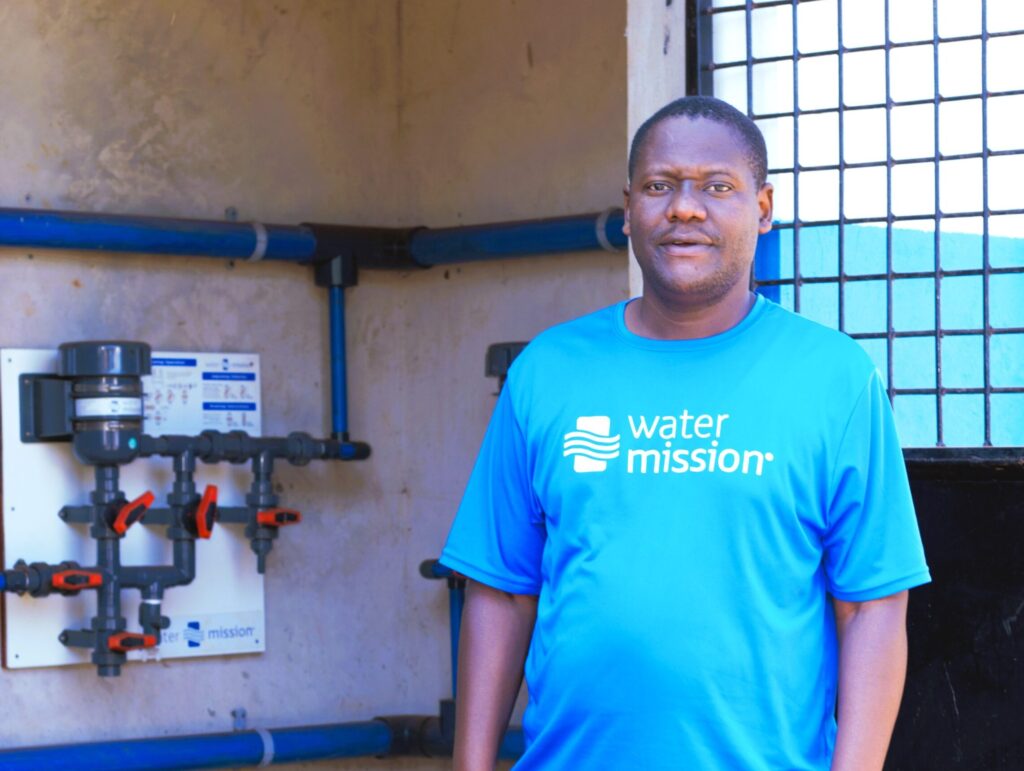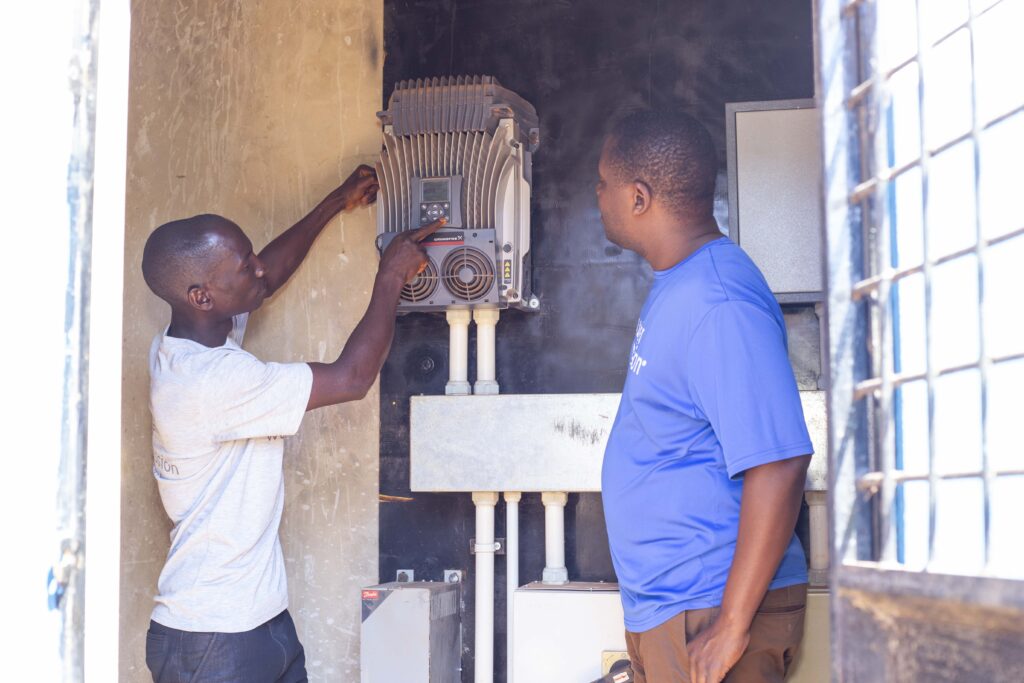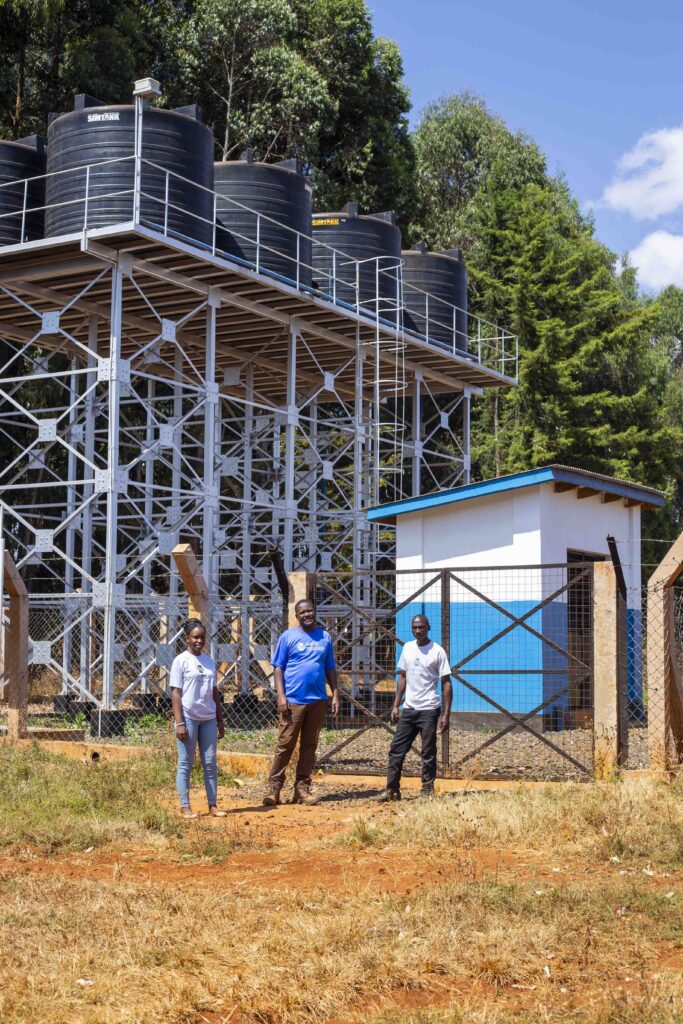
Water Mission Community Development Officer Yosia Kulanga. Photo: Water Mission
Water Mission Tanzania’s Community Development Officer, Yosia Kulanga, works from an office in Kasulu. Yosia helps oversee water system design and construction for Water Mission’s safe water projects in Tanzania.
When a community or government leader officially requests a safe water project from Water Mission, the team in Tanzania conducts a pre-assessment to gather initial information about the context and need. If the criteria for Water Mission to respond are met, the organization conducts a full assessment before beginning the planning and design process.
The assessment provides critical information that is necessary for project planning and system design. Community members are actively involved starting in the assessment stage, which helps to shape the project design to ensure it meets their needs.
Designing a system begins with determining the materials and system specifications. Systems specifications—such as size, materials, and treatment type—are based on a range of factors, including population size, existing water sources, and design requirements. Taking these things into consideration at the beginning of the project ensures the system’s capacity, number of solar panels, pump size, distribution points, and pipe network are appropriately designed.

Yosia Kulanga (right) has trained the local system operator Metod for system operation and maintenance. Photo: Water Mission
Regarding projects in the Kasulu region of Tanzania, Yosia shared:
“We typically use two types of water storage facilities. One is a poly tank storage system supported by a steel tank tower, and the other is a masonry tank storage facility. The poly tank storage is cost-effective, sustainable, and quick to construct. It is generally used for projects with a storage capacity of less than 50 cubic meters. The masonry tank is used for storing more than 50 cubic meters. Although the masonry tank takes longer to complete and is more expensive, it is also a sustainable method for long-term water storage facilities.”

In every project, Water Mission adheres to established standards, which are reviewed by the government before construction begins to ensure the highest quality design and implementation.
Once system construction is completed, Water Mission transitions into a monitoring and support role. For the first year following project completion, Water Mission staff conduct monthly follow-up visits to provide ongoing support for system operators. After the first year, quarterly visits are conducted. Water Mission also utilizes remote monitoring tools, such as UPTIME, to track daily production and monthly financial progress.
Content provided by Water Mission.

